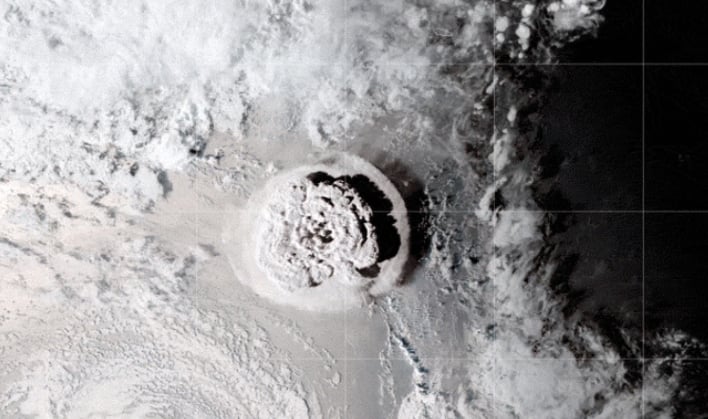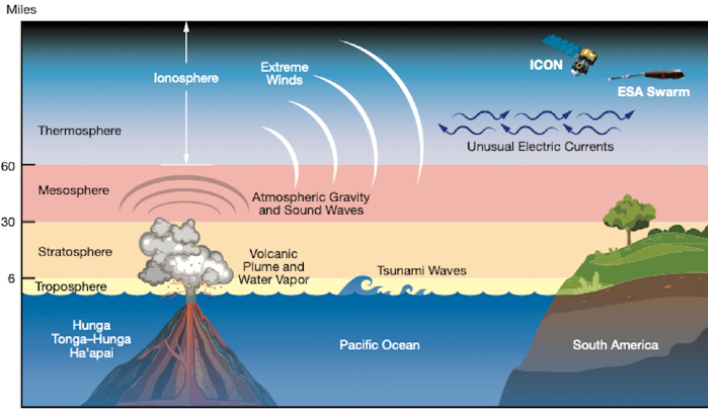Tonga Volcanic Eruption Was So Big It Sent Hurricane Winds To The Edge Of Space

The Hunga Tonga-Hunga Ha'apai underwater volcano is located around 40 miles north of the Tongan capital of Nuku'alofa. The volcanic eruption on January 15th sent atmospheric shock waves, sonic booms, and tsunami waves around the world and killed at least three people. In the hours following the eruption, hurricane speed winds and unusual currents also formed in the ionosphere, Earth's electrified upper atmospheric layer at the edge of space.
"The volcano created one of the largest disturbances in space we've seen in the modern era," stated Ben Harding, a physicist at the University of California, Berkeley, and lead author of a new paper discussing the discoveries. "It is allowing us to test the poorly understood connection between the lower atmosphere and space."
The impact of the eruption was so substantial that it severed the singular underwater fiber-optic cable that connects Tonga to the rest of the world, and led U.S. officials to warn West Coast residents of tsunami waves impacting Pacific beaches.
"These results are an exciting look at how events on Earth can affect weather in space, in addition to space weather affecting Earth," remarked Jim Spann, space weather lead for NASA's Heliophysics Division at NASA Headquarters in Washington, D.C. "Understanding space weather holistically will ultimately help us mitigate its effects on society."
The eruption forced out a massive plume of gases, water vapor, and dust into the sky, as well as produced strong winds in Earth's atmosphere. The winds became faster as they moved upwards, due to the thinning atmospheric layers. Winds reached 450 miles per hour by the time they reached the ionosphere, well over the equivalent of a Category 5 hurricane.
"It's very surprising to see the electrojet be greatly reversed by something that happened on Earth's surface," said Joanne Wu, a physicist at the University of California, Berkeley, and co-author of the new study. "This is something we've only previously seen with strong geomagnetic storms, which are a form of weather in space caused by particles and radiation from the Sun."
In a statement on UC Santa Barbara's website, Robin Matoza, lead author of the study and associate professor at the University of California, Santa Barbara, said, "This atmospheric waves event was unprecedented in the modern geophysical record." He continued, "The 2022 Hunga event provided an unparalleled global dataset for an explosion event of this size. As a community, we will be working further on this even for years."
Top Image Courtesy of NASA


